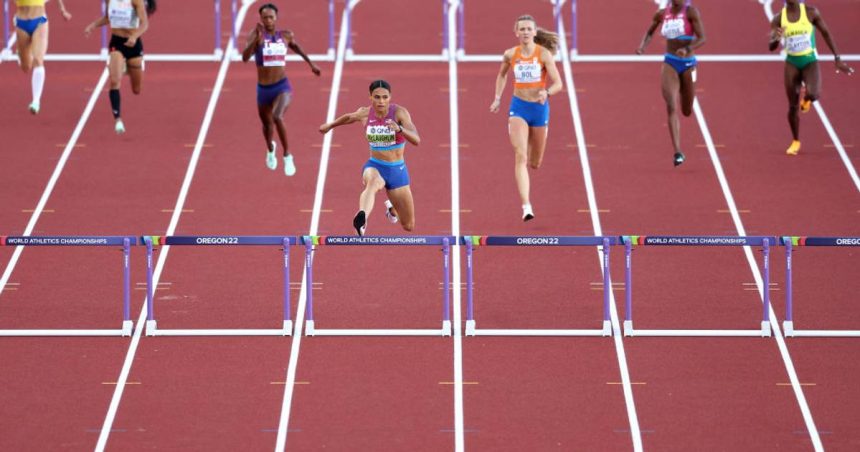It’s been more than two years since the first NIL deals went live, but some marketers still see the space as the “wild West,” as a few sports attorneys and marketers put it.
Maybe that’s because the legal framework for NIL is still evolving: “The landscape was shifting as we learned it,” as Ibotta CMO Richard Donahue put it. NIL rules also differ state to state, and brands can’t work directly with schools to facilitate deals with athletes (although that could change).
“It’s a space that a lot of people are interested in, but at the same time, traditional marketers may still be a little bit cautious, unsure of what the rules are, how to navigate [them]…once they hear ‘state-by-state rules,’ a lot of national advertisers kind of turn off,” Jim Johnston, sports and entertainment attorney at Davis+Gilbert, told Marketing Brew.
Still, many brands have taken advantage of NIL—an NCAA rule that lets student athletes profit off of their name, image, and likeness—over the past few years. Companies ranging from American Eagle to Shake Shack have crafted campaigns centered on college athletes. As Johnston said, “the hurdles are not as significant” as some marketers might expect.
For those who might just be getting acquainted with student athletes, NIL experts advise keeping a few best practices in mind to avoid a false start.
Back to the drawing board chalkboard
Some marketers might want to revisit their school days before doing NIL deals: “My first advice is always do your homework on that particular student athlete,” Ricardo Jackman, chair of the sports and entertainment practice at law firm Morris, Manning & Martin, said. That could involve scrolling through their social media profiles, a formal interview, or even asking for references in cases where student athletes have prior NIL experience, he said.
“Instagram is an athlete’s résumé,” Jason Bergman, co-founder and CEO of NIL marketplace MarketPryce, said. “We tell student athletes all the time: ‘That’s what brands are going to go look at no matter what.’”
That homework also involves getting up to speed on the latest school, state, and NCAA regulations. For instance, brands and student athletes aren’t allowed to use “school emblems” in their campaigns, Jackman said, since those are trademarked by the schools and not included with NIL deals.
When marketers are working on NIL deals, different state and NIL rules can impact what a brand is able to do, and it is “worth being aware of how that might impact what they’re asking for,” Michael Isselin, partner in the entertainment and media group at law firm Reed Smith, said. By and large, though, lawyers we spoke to agreed brands likely don’t have to change their NIL approaches from state-to-state, as legislation tends to have similarities across state lines.
Honesty is the best policy
Once brands shake hands with student athletes, it’s best to be upfront and clear about specific goals, NIL experts said. “Not a lot of brands do that,” Bergman said. That’s perhaps because some have approached their work with student athletes the same way they would an influencer campaign, Isselin said, despite the fact that they often require different considerations.
Get marketing news you’ll actually want to read
Marketing Brew informs marketing pros of the latest on brand strategy, social media, and ad tech via our weekday newsletter, virtual events, marketing conferences, and digital guides.
“I don’t think that an advertiser or brand should be necessarily tasked with educating the student athletes that they’re engaging [with], but don’t set anybody up for failure,” Isselin said.
“Student athletes are amazing at following directions,” Bergman said, so clear campaign objectives could go a long way. Jackman advised marketers to provide one-sheets that “set the terms and expectations of what you want,” including any details like hashtags that need to be included in posts, the numbers of posts required, and whether posts must be preapproved.
There is one thing that marketers might not want to be too specific about: posting schedules. Student athletes are particularly busy, especially when they’re in season, according to Danny Morrissey, co-founder of college sports marketing and branding agency Postgame, so brands should be flexible.
Branch out
So far, football players have been among the most popular for NIL deals, but several NIL experts said marketers would be remiss if they weren’t also flexible with the roster of student athletes they’re open to working with.
“This isn’t to say football players don’t take partnerships seriously, but we see a lot of care and commitment from athletes that maybe aren’t used to receiving dozens of deals a month or a week,” Sam Weber, head of brand marketing and communications for NIL platform Opendorse, said.
Ibotta did a deal with UConn basketball star Paige Bueckers this summer as part of its first foray into the world of NIL, according to Donahue. It went well enough that the cash-back app started a program last month that lets any college athlete who refers their followers to Ibotta make money.
Kate Jungers, group account director at marketing agency Intersport, which developed 7-Eleven’s first formal NIL program, said brands should have multiple conversations and keep an open mind. “Sometimes you build a list of target athletes, and then you go have some conversations and realize there may be other, better fits out there,” she said.
For instance, even within the world of football, a freshman may be a better fit than a senior, according to Jackman. They’re likely more affordable at that stage of their career, he said, and have the potential to become “a megastar” in another year or two.
Then, there’s the chance they go on to professional fame. While NIL deals don’t extend beyond college, Johnston pointed out that some have re-signed athletes once they’ve gone pro.
“What if they become an Olympian?” Jackman said. “You may still be able to have that reach in that relationship, and they’ll still want to do business with you.”
Read the full article here










